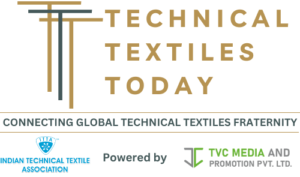Engineered fibers are everywhere, woven into the clothes we wear, the furniture we sit on, and even the cars we drive. They may not immediately grab your attention, but these advanced materials are quietly transforming industries with their exceptional strength, durability, and versatility. Whether it’s creating high-performance sportswear or lightweight aerospace components, engineered fibers are making everyday products smarter, stronger, and more sustainable. This article will explore what’s driving their demand, where they’re used, and why they’re shaping the future of materials.
The global engineered fibers market was valued at USD 11.98 billion in 2024 and is projected to reach USD 20.23 billion by 2034, growing at a CAGR of 5.39% from 2025 to 2034. This growth is largely fueled by the increasing demand for lightweight, high-performance materials in the automotive and aerospace industries.
Engineered fibers are specially designed synthetic or modified natural fibers created to deliver specific performance characteristics, such as enhanced strength, durability, flexibility, or resistance to heat and chemicals. They are tailored through advanced manufacturing processes to meet the precise needs of various industries, including automotive, aerospace, textiles, construction, and healthcare.
Types of Engineered Fibers – Engineered fibers are designed to meet the specific performance needs of various industries. Here are the most widely used types:
- Carbon Fibers – Carbon fibers are known for their exceptional strength-to-weight ratio and stiffness. They are widely used in aerospace, automotive, and sports equipment to create lightweight yet highly durable components. Despite being relatively expensive, their performance benefits make them essential in high-end and performance-critical applications.
- Aramid Fibers – Aramid fibers, such as Kevlar and Nomex, are renowned for their high strength, heat resistance, and impact protection. These fibers are commonly used in bulletproof vests, fire-resistant clothing, and protective gear, as well as in aerospace and military applications where both safety and durability are critical.
- Glass Fibers – Glass fibers are among the most commonly used engineered fibers due to their affordability and versatility. They offer good tensile strength, thermal stability, and corrosion resistance. Glass fibers are widely found in construction materials, boat hulls, automotive parts, and electronics.
- Basalt Fibers – Derived from natural volcanic rock, basalt fibers offer excellent thermal resistance, corrosion resistance, and mechanical strength. They are an eco-friendly alternative to glass fibers and are used in various applications, including construction, the automotive industry, and aerospace.
Applications Across Industries
Engineered fibers are prized for their exceptional strength, lightweight properties, and durability, qualities that make them ideal for a wide range of high-performance applications. Here’s a look at how engineered fibers are being used across key sectors: Automotive, Aerospace, Construction, Textiles & Apparel & Healthcare.
The Future of Engineered Fibers
The future of engineered fibers appears promising, driven by a growing demand for high-performance, lightweight, and sustainable materials across various industries. As sectors such as automotive, aerospace, and construction continue to prioritize fuel efficiency, strength, and durability, the use of engineered fibers is expected to increase. Innovations in bio-based and recyclable fibers are also gaining traction, aligning with global sustainability goals. Additionally, advancements in smart fibers, capable of responding to stimuli such as heat, pressure, or moisture, are opening up new possibilities in wearable technology, healthcare, and defense. With a strong outlook for the engineered fibers market and continuous R&D, engineered fibers are poised to play a key role in shaping the next generation of materials.
Engineered fibers are becoming essential to innovation across industries. As demand rises for stronger, lighter, and more sustainable solutions, these fibers are meeting the challenge with unmatched performance and adaptability. From cars and airplanes to clothing and medical devices, their impact continues to grow. With ongoing advancements and strong growth in the engineered fibers market, engineered fibers are poised to shape the future of materials in both everyday products and advanced technologies.
